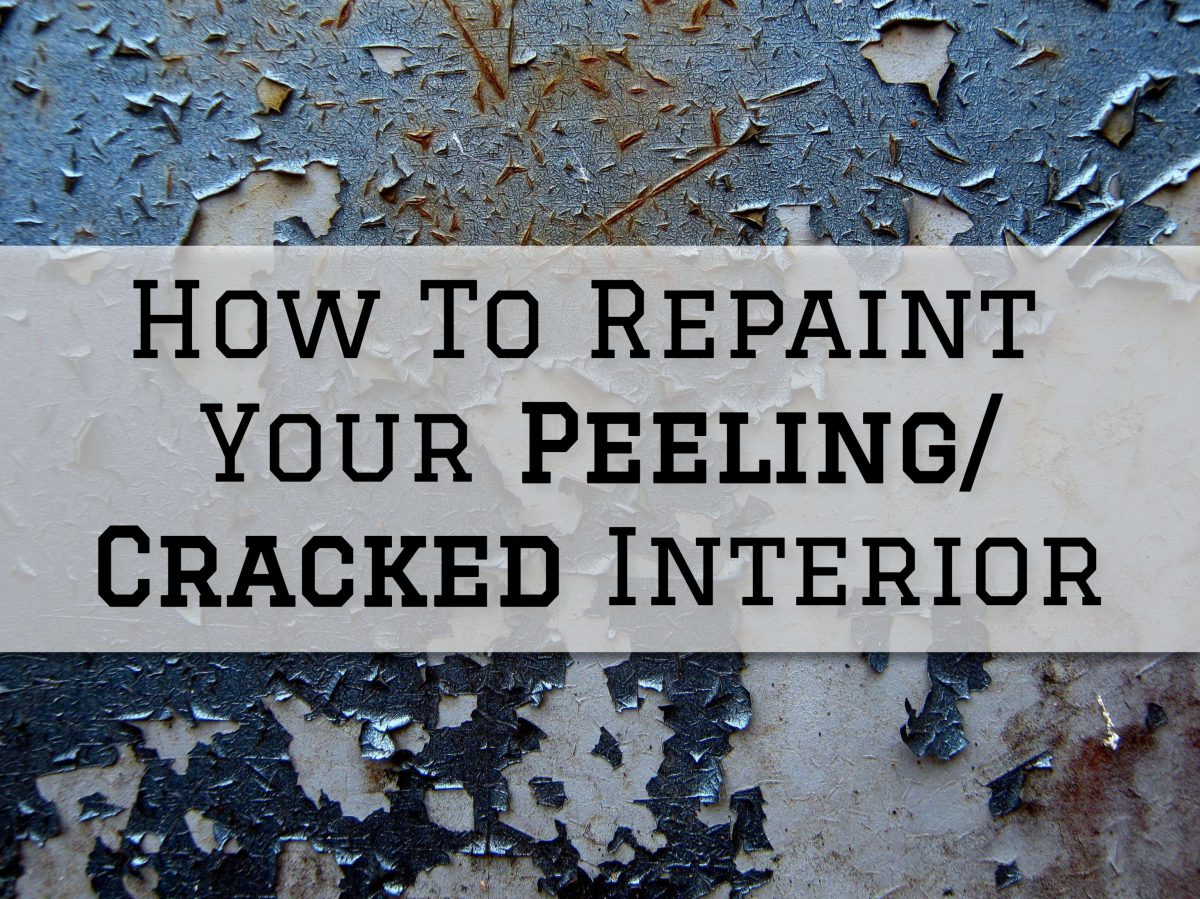How To Repaint Your Peeling/Cracked Interior in Rochester, MI
Peeling/cracking paint on your home interior can be very unsightly, messy, and bring down your home’s overall appeal.
While this can be a common paint problem among households, this doesn’t mean that this warrants lesser urgency – when left untreated, the existing peeling problem on your interior could escalate to an even bigger problem.
By that time, it might already be too big and complicated of a problem to take care of, and one you could have fully prevented had you given the issue the proper intervention on its first signs.
So, if you’re seeing early signs of paint peeling on your interior and would like to do the responsible thing of getting it fixed as soon as possible, here’s something you’ll find useful!
Check out this guide on How To Repaint Your Peeling/Cracked Interior.
Step 1: Inspect The Existing Damage
Before anything else, you must inspect the existing damage on your interior first.
This will be important so you can have an assessment of the extent of the damage on your interior, and possibly have a guess on why your interior’s coat of paint has peeled in the first place.
Paint peeling/cracking can be a common paint problem among households, which might be a direct/indirect effect of the following:
- Lack of surface preparation prior to painting;
- Lack of primer application;
- Moisture present on the surface you’ve painted;
- Using low-quality paint;
- An overall abysmal painting project
Knowing these will give you a significant boost on how you should plan out your painting project, how to best address the problem, and essentially what to avoid to prevent the problem from happening again.
Step 2: Do Proper Preparation
After having a thorough inspection of your damaged interior, and strategizing accordingly, you’ll now want to proceed with the next part of your process and the first step in any painting project: proper preparation.
To do this, you’ll want to:
- Clear the room: Remove all furniture, decor, and items from the room. If you can’t move some furniture, push it to the center of the room and cover it with plastic sheets to protect it from paint splatters.
- Protect floors and trim: Cover the floors with drop cloths or plastic sheeting to prevent paint from dripping onto them. To protect your edges and trims from paint smudges, use painter’s tape.
- Clean the walls: Having dust and dirt on your surface will prevent proper paint adhesion. So, use a damp cloth to wipe down the walls and remove any grime. If your walls are exceptionally dirty, you may need to use a mild detergent solution.
- Repair cracks and holes: Fill any cracks or holes in the walls with a patching compound. After drying the compound, you’ll want to sand them to achieve a smoother and even feel.
Step 3: Prime Your Walls
In fixing the existing paint peeling/cracking problem on your home interior, it is necessary that you prime your walls first prior to adding your brand-new coat of paint.
As has been previously mentioned, a lack of primer application can lead you to the same paint problem – which is the exact kind of thing you’re trying to fix in the first place!
So, prior to applying your brand new coat of paint, apply a coat of primer to your walls first, and allow it to dry completely before proceeding.
Step 4: Apply Your Paint
Now here comes the fun part of your project: applying your paint!
To do these, here are a few pointers to keep in mind:
- Cut in: Start by using a brush to cut in around the edges of the walls, including corners, ceilings, and baseboards. This ensures clean lines and a neat finish.
- Roll on the paint: Use a roller to apply paint to the larger wall areas. Roll the paint in a “W” or “M” shape to evenly distribute it, then roll it out in long, vertical strokes to create a uniform finish.
- Work in sections: To avoid lap marks, work in small sections at a time. Keep a wet edge by overlapping your strokes with the previously painted area while it’s still wet.
- Apply a second coat: Once the first coat has dried completely, typically in a few hours, apply a second coat for better coverage and durability.
Step 5: Clean Up
After successfully applying your fresh coat of paint, you’ll now want to clean up and proceed with your other post-painting necessities.
Here’s what you’ll want to do:
- Remove painter’s tape: Carefully remove the painter’s tape before the paint dries completely to avoid peeling the paint off with it.
- Clean your tools: Thoroughly clean your brushes, rollers, and other painting tools with soap and water or the recommended cleaner for the type of paint you used.
- Inspect your work: Once the paint is dry, inspect your walls for any imperfections, drips, or missed spots. Touch up any areas that need attention with a small brush or roller.
- Reassemble the room: Once you’re satisfied with the results, move your furniture and decor back into the room.
If you need professional help with your interior painting project, Eason Painting can help.
Our home interior painting services are available in Washington Township, Rochester, Romeo, Shelby Township, Harrison Township, and Clinton Township, MI.
Call us today at 586-465-5081 for a FREE painting estimate.
Related: Reasons To Do A Bathroom Cabinet Painting Project in Richmond, MI
Safety Painting Tips For Your Roof Painting Project in Rochester, MI

